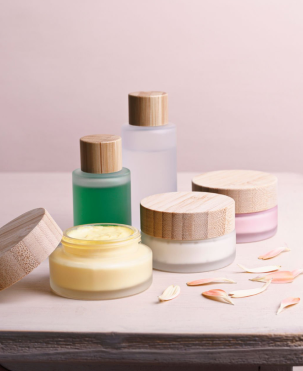Regulatory Updates
National Standard of the P.R.C.: Feed additive — β-Carotene Powder

Distribution date: 14 May 2019 | Final date for Comment: 13 July 2019
This standard specifies the technical requirements, sampling, test methods, inspection rules, labels, packaging, transportation, storage and shelf life of feed additive β-carotene powder. This standard is applicable to the feed additive β-carotene powder made from chemical synthesized β-carotene crystals and feed additives such as starch, gelatin and other excipients, which are sprayed, coated and dried. Chapters 1, 4, 6 and 7 of this standard are mandatory, while the rest are recommended.
Products Covered: Feed additive β-Carotene powder
Regulation Type: Regular notification
Revision of the Standards and Specifications for Foods and Food Additives under the Food Sanitation Act (Revision of agricultural chemical residue standards, final rule)

Distribution date: 13 May 2019
The proposed maximum residue limits (MRLs) for Spinosad notified in G/SPS/N/JPN/591 (dated 30 July 2018) were adopted and published on 7 February 2019.The specified MRLs are available as below:
Products Covered:
Regulation Type: Addendum to Regular Notification
Revision of the Standards and Specifications for Foods and Food Additives under the Food Sanitation Act (Revision of agricultural chemical residue standards, final rule)

Distribution date: 13 May 2019
The proposed maximum residue limits (MRLs) for Metalaxyl and Metalaxyl-M notified in G/SPS/N/JPN/590 (dated 30 July 2018) were adopted and published on 7 February 2019.The specified MRLs are available as below:
Products Covered:
Regulation Type: Addendum to Regular Notification
Revision of the Standards and Specifications for Foods and Food Additives under the Food Sanitation Act (Revision of agricultural chemical residue standards, final rule)

Distribution date: 13 May 2019
The proposed maximum residue limits (MRLs) for Chlormequat notified in G/SPS/N/JPN/589 (dated 30 July 2018) were adopted and published on 7 February 2019.The specified MRLs are available as below:
Products Covered:
Regulation Type: Addendum to Regular Notification
Revision of the Standards and Specifications for Foods and Food Additives under the Food Sanitation Act (Revision of agricultural chemical residue standards, final rule)

Distribution date: 13 May 2019
The proposed maximum residue limits (MRLs) for Teflubenzuron notified in G/SPS/N/JPN/586 (dated 30 July 2018) were adopted and published on 7 February 2019.The specified MRLs are available as below:
Products Covered:
Regulation Type: Addendum to Regular Notification
Revision of the Standards and Specifications for Foods and Food Additives under the Food Sanitation Act (Revision of agricultural chemical residue standards, final rule)

Distribution date: 13 May 2019
The proposed maximum residue limits (MRLs) for Chlorfluazuron notified in G/SPS/N/JPN/588 (dated 30 July 2018) were adopted and published on 7 February 2019.The specified MRLs are available as below:
Products Covered:
Regulation Type: Addendum to Regular Notification
Draft of "Suspension of the Importation of Deer Velvet, Deer Antler, Deer Penis (and Testis) and Deer Antler Glue from Listed Countries (Zones) with Reported Case(s) of Chronic Wasting Disease"

Distribution date: 10 May 2019 | Final date for Comment: 09 July 2019
Suspension of the importation of deer velvet, deer antler, deer penis (and testis) and deer antler glue from listed countries (zones) with reported case(s) of chronic wasting disease.
Products Covered: Deer velvet, deer antler, deer penis (and testis) and deer antler glue
Regulation Type: Regular notification
Revision of the Standards and Specifications for Foods and Food Additives under the Food Sanitation Act (Revision of agricultural chemical residue standards, final rule)

Distribution date: 10 May 2019
Maximum residue limits (MRLs) for the following agricultural chemical: Pesticide: Pyribencarb.
Products Covered: - Fish and crustaceans, molluscs and other aquatic invertebrates (HS Codes: 03.02, 03.03 and 03.04) - Edible vegetables and certain roots and tubers (HS Codes: 07.02, 07.03, 07.04, 07.05, 07.06, 07.07, 07.08, 07.09, 07.10 and 07.13) - Edible fruits and nuts, peel of citrus/melons (HS Codes: 08.05, 08.06, 08.07, 08.08, 08.09, 08.10,08.11 and 08.14) - Coffee, tea, mate and spices (HS Codes: 09.02, 09.03, 09.04, 09.05, 09.06, 09.07, 09.08, 09.09 and 09.10) - Cereals (HS Codes: 10.01 and 10.06)- Oleaginous fruits, miscellaneous grains, seeds and fruits (HS Code: 12.01)
Regulation Type: Regular notification
DUS DEAS 965:2019, Lipstick — Specification, First Edition

Distribution date: 09 May 2019 | Final date for Comment: 08 July 2019
This Draft Uganda Standard specifies the requirements, sampling and methods of test for lipstick.
Products Covered: Lipstick
Regulation Type: Regular notification
DUS DEAS 963:2019, Lip balm (Lip salve) — Specification, First Edition

Distribution date: 09 May 2019 | Final date for Comment: 08 July 2019
This Draft Uganda Standard specifies requirements, sampling and test methods for lip balm which are petroleum or vegetable oil based. This standard does not cover lip balm for which therapeutic claims are made, lipsticks, lip gloss and emulsion types.
Products Covered: Lip balm (Lip salve)
Regulation Type: Regular notification
Submit your email ID to receive notifications about upcoming courses and events
